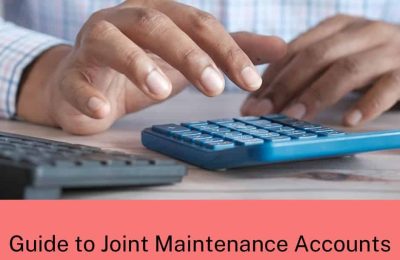Given the rise of property prices over recent years, it’s no surprise that co-ownership has emerged as a popular strategy for property investment. This method for getting on the property ladder or kicking off an investment portfolio allows individuals to pool their resources. You’ll have a bigger scope of properties to choose from, since your budget will be larger, and you’ll have someone to share the risks with which makes investing seem more manageable and less overwhelming.
Investing in property with someone else can be a rewarding experience, but it also comes with potential challenges. So, to protect all parties involved and ensure a smooth partnership, there are several key documents that you should consider essential, beyond just property insurance.
Property-specific documents
Before finalising a property investment, you’ll want to review any property-specific documents to make sure your investment is sound. While in England, a Property Survey and TA6 form are used to provide a detailed overview of the building itself, in Scotland, sellers arrange a Home Report. This document is split into three parts: a single survey and valuation, an Energy Performance Certificate (EPC), and a property questionnaire. The Home Report will ensure you go into the investment knowing of any faults or issues that need repairing, so you’re not faced with any costly surprises. Some mortgage lenders may also request an independent survey alongside the Home Report.
There are a few instances where a home won’t come with a Home Report, such as properties which have been on the market since December 2008, new properties being sold off-plan, newly converted homes which haven’t yet been used in their converted state, and dual-use homes that are used for commercial and residential purposes. Seasonal holiday homes that are only used during certain periods of the year are also exempt.
Deed of Trust
You will need to determine ahead of investing how much each person is contributing to the deposit, whether the mortgage payments will be covered exclusively from the rent and the exact split between you should the property become vacant. Each person investing in the property should seek out their own legal advice independently on this matter, and have a Deed of Trust drawn up to establish the arrangement formally.
Property ownership structures
Not all property investments are split 50/50, so you’ll need a document in place that outlines the ownership structure. The two most common structures are Tenancy-in-Common and Joint Tenancy. A Tenancy-in-Common Agreement defines each owner’s percentage of ownership, which can be unequal if necessary, and outlines their individual rights and obligations. This structure allows each owner to sell their share independently.
Alternatively, a Joint Tenancy Agreement creates an arrangement where each party has an equal and undivided interest in the property. A key feature of this structure is the right of survivorship, which means if one owner dies, their share automatically transfers to the surviving owner(s). Each approach has its pros and cons, and the choice depends on the specific circumstances and goals of the co-owners.
Disposition
The Disposition, similar to a Title Deed in other jurisdictions, transfers the ownership of the property from one person to another. This document is essential in the conveyancing process, as it formalises the change in ownership and legally establishes the new owners’ rights. It will include key details such as the identities of both the buyer and seller, the property’s legal description, and the agreed sale price.
Insurance policy
When co-investing, it’s important that you obtain a joint insurance policy that covers all owners’ interests. If the property is financed, Mortgage Documents will also naturally be necessary. These documents outline the terms of the loan and typically hold all co-owners jointly liable for the debt, which can have significant implications for everyone’s credit so this should be taken into account when investing with someone else.
Property-related finances and operations
Clear financial agreements are crucial for maintaining a harmonious co-ownership arrangement. A Co-Ownership Expense Agreement, while not legally required, is advisable because it will detail how property-related costs will be shared, such as ongoing expenses for property maintenance, tax payments, and insurance premiums, so that one person doesn’t get stuck paying everything alone. The agreement needs to specify each owner’s responsibility and the process for approving and paying for these expenses.
If the property is intended to be rented out, you will also need a comprehensive Rental Agreement in place, not just for your tenants but also for each party invested in the property. It should outline the process for screening tenants, collecting and distributing rent, and managing the property, and clearly define each co-owner’s responsibilities in these areas to prevent misunderstandings and ensure smooth operation of the investment.
Exit strategy documents
Even the most successful partnerships may eventually come to an end for a variety of reasons, so it’s vital that you have an exit strategy document in place from the beginning. It protects all parties from disputes and ensures that the partnership can come to an end smoothly without any arguments. A Property Sale Agreement should outline the conditions under which the property can be sold and how the proceeds will be divided, to prevent disagreements if one party wants to sell and the other doesn’t.
A Buyout Agreement is equally important, which details the terms under which one party can buy out the other’s share of the property if they so choose. This document should include an agreed-upon method for valuing the property to ensure it’s a fair transaction. These documents can make the process of ending the co-ownership arrangement much smoother and less contentious, whatever the cause.
Investing in property with a friend or acquaintance can be a lucrative and rewarding experience, but it requires careful planning and documentation to ensure you’re protected from a legal standpoint. The documents outlined here form a comprehensive framework for a successful co-ownership arrangement, protecting the interests of all parties involved.
However, it’s important to note that these are complex legal and financial matters so seeking professional advice from legal, financial, and property experts is essential to ensure that all the documents created are properly prepared and tailored to your specific situation.










